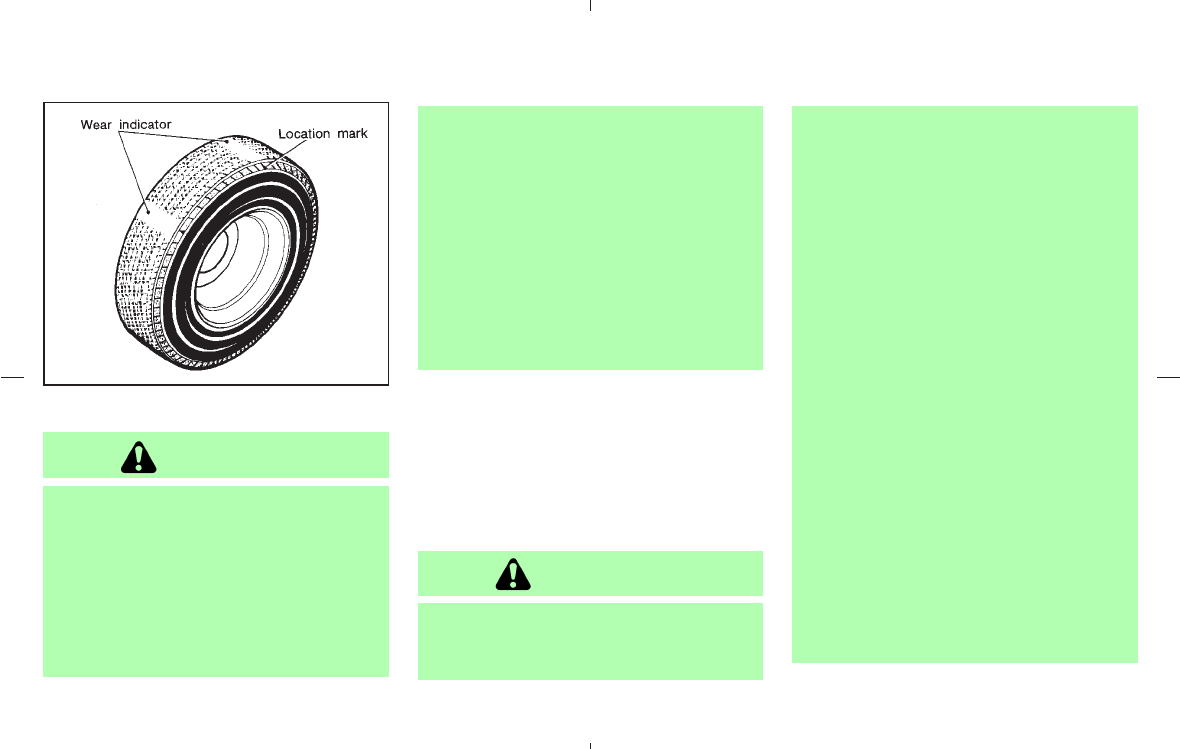
Tire wear and damage
WARNING
¼ Tires should be periodically in-
spected for wear, cracking, bulging,
or objects caught in the tread. If ex-
cessive wear, cracks, bulging, or
deep cuts are found, the tire should
be replaced.
¼ The original tires have a built-in tread
wear indicator. When the wear
indicator is visible, the tire should be
replaced.
¼ Improper service for a spare tire may
result in serious personal injury. If it
is necessary to repair the spare tire,
contact your NISSAN dealer.
¼ For additional information regarding
tires, refer to “Important Tire Safety
Information” (US) or “Tire Safety In-
formation” (Canada) in the Warranty
Information Booklet.
Replacing wheels and tires
When replacing a tire, use the same size, tread
design, speed rating and load carrying capacity
as originally equipped. See “Specifications” in
the “9. Technical and consumer information”
section for recommended types and sizes of
tires and wheels.
WARNING
¼ The use of tires other than those
recommended or the mixed use of
tires of different brands, construction
(bias, bias-belted or radial), or tread
patterns can adversely affect the ride,
braking, handling, ground clearance,
body-to-tire clearance, tire chain
clearance, speedometer calibration,
headlight aim and bumper height.
Some of these effects may lead to
accidents and could result in serious
personal injury.
¼ If the wheels are changed for any
reason, always replace with wheels
which have the same offset dimen-
sion. Wheels of a different offset
could cause premature tire wear, de-
grade vehicle handling characteris-
tics and/or interfere with the brake
discs/drums. Such interference can
lead to decreased braking efficiency
and/or early brake pad/shoe wear.
Refer to “Wheel/tire size” in the
“Technical and consumer informa-
tion” section of this manual for wheel
offset dimensions.
¼ When a spare tire is mounted or a
wheel is replaced, the pressure of
MDI0004
8-34 Maintenance and do-it-yourself
੬ 04.4.5/Z50-D/V5.0 ੭


















